Why You Should Add A High-Value Item Insurance Endorsement To Your Policy
Customizing your insurance to provide the coverage you need requires careful thought and consideration regarding your high-value items and assets. While none of us can anticipate a loss, the need to put proper financial protections in place to replace or repair high-value items is essential. High-value items refer to items that would be expensive to replace or repair, such as jewelry, artwork, high-end electronics such as a digital camera, or expensive gear such as a custom fit mountain bike or golf clubs.
Theft, floods, fires, natural disasters. These are all things many of us see on the news every day, and yet most of us think they will never happen to us. But the truth is, none of us are safe from possibly experiencing one of these unexpected emergencies. That’s why proper insurance coverage isn’t something that we should view as a luxury but rather a necessity.
A qualified insurance agent can help you understand what’s covered by your policy, what’s excluded, and the limits of your policy’s coverage. They can advise you on how to protect your valuable possessions.
Why Is High-Value Item Insurance Important?
Theft & Crime Statistics
It’s important to remember that none of us is immune from the possibility of having our property and personal belongings damaged or stolen. In fact, the unfortunate truth is that these occurrences are much more common than you might think! Here are some statistics:
- Every year in the United States alone, there are between 2.3 and 2.6 million robberies.
- On average, a burglary occurs in the United States once every 23 seconds!
- According to reports by the FBI, the six most commonly stolen items are cash, jewelry, furs, vehicles, electronics, and firearms.
Although these facts are alarming, they are not the only factors you need to consider: crime and theft are only one type of scenario in which your property and personal belongings can be lost or damaged. Many other events and accidents could cause significant damage to your home and your belongings, from storm damage to fires.
- In 2018, in the United States alone, fire departments responded to fire alarms every 24 seconds.
Hopefully, these statistics help to convince you of the importance of insuring your belongings. But are you as protected as you think?
We often recommend additional coverage above and beyond your homeowner’s policy. Customizing your insurance to fit your unique situation is an important step in getting the coverage you need. Some people think that they don’t need to worry about seeking out any additional coverage because they have a homeowner’s insurance policy. This is a common misconception. With that in mind, let’s look at the limits of a typical homeowner’s insurance policy.
Limits of Homeowner’s Insurance Policy
So, you’ve purchased a home or signed a rental agreement and therefore purchased homeowner’s or renter’s insurance. This is great news. You’re well on your way to peace of mind.
But it’s important to understand that there are limitations to the coverage afforded to you by your homeowner’s insurance policy. The first thing you need to know is that not all homeowner’s insurance policies are created equal. That is to say that you need to make sure you know the specific limitations of your policy. There are, however, some standard elements that apply to most policies.
Let’s go over a few of these key factors and the important terminology you should understand to ensure you have a clear grasp of your homeowner’s insurance policy.
- Covered Incidents: Typically, homeowner’s insurance covers four types of incidents. These are— interior damage to your home, exterior damage to your home, loss or damage of personal assets or belongings, and injury or bodily harm that occurs while on the property.
- Deductibles: A deductible is an out-of-pocket expense that the insurance holder needs to pay for damage or loss that is covered under your homeowner’s insurance policy. This can take some homeowners by surprise because they aren’t aware that their policy doesn’t cover the entire cost of the lost or damaged item. Make sure you have a clear understanding of your policy deductible.
- Limits of Liability: This is a crucial component of a homeowner’s insurance policy, especially for individuals with high-value items and assets they are looking to protect. The liability limit is the maximum amount the insurance company will be required to pay a policyholder during a specific period of time.
- Excluded Scenarios: There are a few scenarios that are typically excluded from insurance coverage on most homeowner’s policies. These scenarios fall under what is usually referred to as a Force Majeure clause. Under contract law, this typically covers natural disasters, acts of God, and acts of war. If your property or belongings are damaged in a scenario that falls under this clause of your contract, your insurance company is not obligated to provide coverage.
These points illustrate that, contrary to popular belief, a basic homeowner’s policy doesn’t offer coverage for all loss scenarios. These gaps in coverage are often addressed by policy endorsements such as water backup coverage endorsement or high value-items endorsement. Your agent can advise you on how to customize your policy to help close gaps in coverage. It is crucial for individuals with high-value items such as jewelry, artwork, antiques, memorabilia, and other collectibles to ensure that you know the relevant limits of your coverage concerning these items. The good news is that additional policy options can provide further protection for these types of belongings. In the next section, we will cover the basics of insurance for high-value items.
How Does High-Value Item Insurance Work?
Additional coverage to your policy is referred to as a policy endorsement. Policy endorsements help to close gaps in coverage and, in this case, provides you with coverage for high-value items. Additional coverage endorsements will typically have fewer stipulations and limitations as well as lower or no deductibles.
For example, let’s say that you have a beautiful and expensive engagement ring, and one day it mysteriously disappears. You have no idea if you lost it, if it was stolen, or if it fell off your finger when you were at the beach. With a typical homeowner’s insurance policy, due to the mysterious circumstances surrounding the loss of the ring, it is unlikely that you will receive any compensation. And even if you did, it may not cover the full value of the ring. In contrast, most high-value item endorsements would offer coverage for the full cost of the lost ring despite the mysterious circumstances as long as the item was scheduled or listed on the policy. As with homeowner’s insurance policies, every endorsement is unique, so be sure that you have a thorough understanding of your available options for additional coverage.
How Do I Insure My High-Value Items?
Does this sound like the type of coverage you could benefit from? If you’re a collector of antiques, sports memorabilia, or artwork or your own high-value items like jewelry or top-of-the-line electronics, high-value item insurance is likely worth the investment. So how do you get started? Let’s look at what you need to do to ensure that your most precious and valuable belongings are properly protected.
Schedule Your Belongings
To protect the full value of your most expensive belongings, you’ll need to schedule them. Essentially, this means that you need to take an inventory of the belongings in your home and keep a record of all the relevant information that an insurance company will require to fulfill a claim.
To find out exactly what information you need to collect, it is best to speak with an experienced insurance agent about your unique policy and specific needs. Typically, insurance companies will require a complete inventory of the items under the policy’s coverage, which includes photographs and original receipts or appraisal records. If the item in question is a collectible or an antique, you may also need to provide certification to prove the piece’s authenticity.
This may sound like a big job and, it’s true, it can be time-consuming; however, remember that you’ve spent a great deal of time, effort, and money to acquire these pieces in the first place. So, it’s worth spending the effort to protect your precious valuables. In addition, some useful apps can help streamline this process considerably.
Conduct Appraisals
If you do not have access to original receipts for every high-value item you wish to insure, don’t despair. This doesn’t mean that you won’t seek additional coverage for these items; rather, it means that you will need an appraisal for those objects. It is worth having an appraisal done for all your high-value items, especially if they are collectibles or antiques. Appraisals will give you an up-to-date evaluation of how much each item is worth. But before you conduct your appraisals make sure to talk to your insurance agent about the specific certifications required.
Just as it is a good idea to keep multiple copies of your home inventory, it is also good to keep multiple copies of the appraisal certificates you receive. So, photocopy your certificates and place hard copies in different locations. Also, keep an electronic copy as a backup.
Update Your Policy Regularly
So, you’ve purchased a home or rented a space; you’ve obtained homeowner’s or renter’s insurance; you’ve done your due diligence and put effort into understanding the limits of your policy. You’ve then taken stock of the inventory in your home and purchased additional coverage for your high-value items. You’re all set. Well, not quite. Don’t fail to complete the final details required for putting proper coverage in place.
The last step you need to take to insure your property and belongings are adequately protected is an ongoing one, and it involves regularly updating your policy. As you add new high-value items to your home or collection, you’ll need to make sure that your policy reflects these additions. So, get into the habit of regularly reviewing your policy with an experienced professional and scheduling as well as appraising any new items. By getting into this routine, you’ll never be caught unaware.
No question protecting your valuable property and belongings properly requires some effort and guidance from your agent. However, it is always better to be safe than sorry. If you need support to understand the limitations of your current homeowner’s insurance policy or add on additional valuable possessions insurance, Colby Insurance Group can help.
We give you the one-on-one attention you deserve. This way, you’ll be able to find the policy that fits your unique needs. Ready to finally gain a little peace of mind?
To consult with an insurance advisor, call 800-392-6532 or email insure@colby-group.com.
This article is for informational purposes only. Insurance needs and coverages vary; therefore, the terms of your policy will be specific to your situation. We recommend that you discuss your insurance needs with a licensed agent for details on pricing, coverages, and exclusions.

